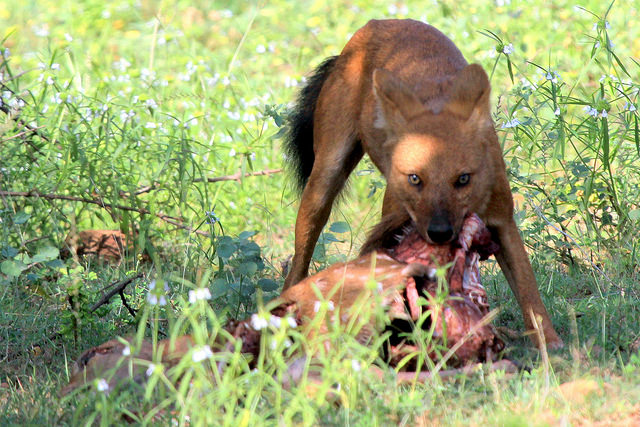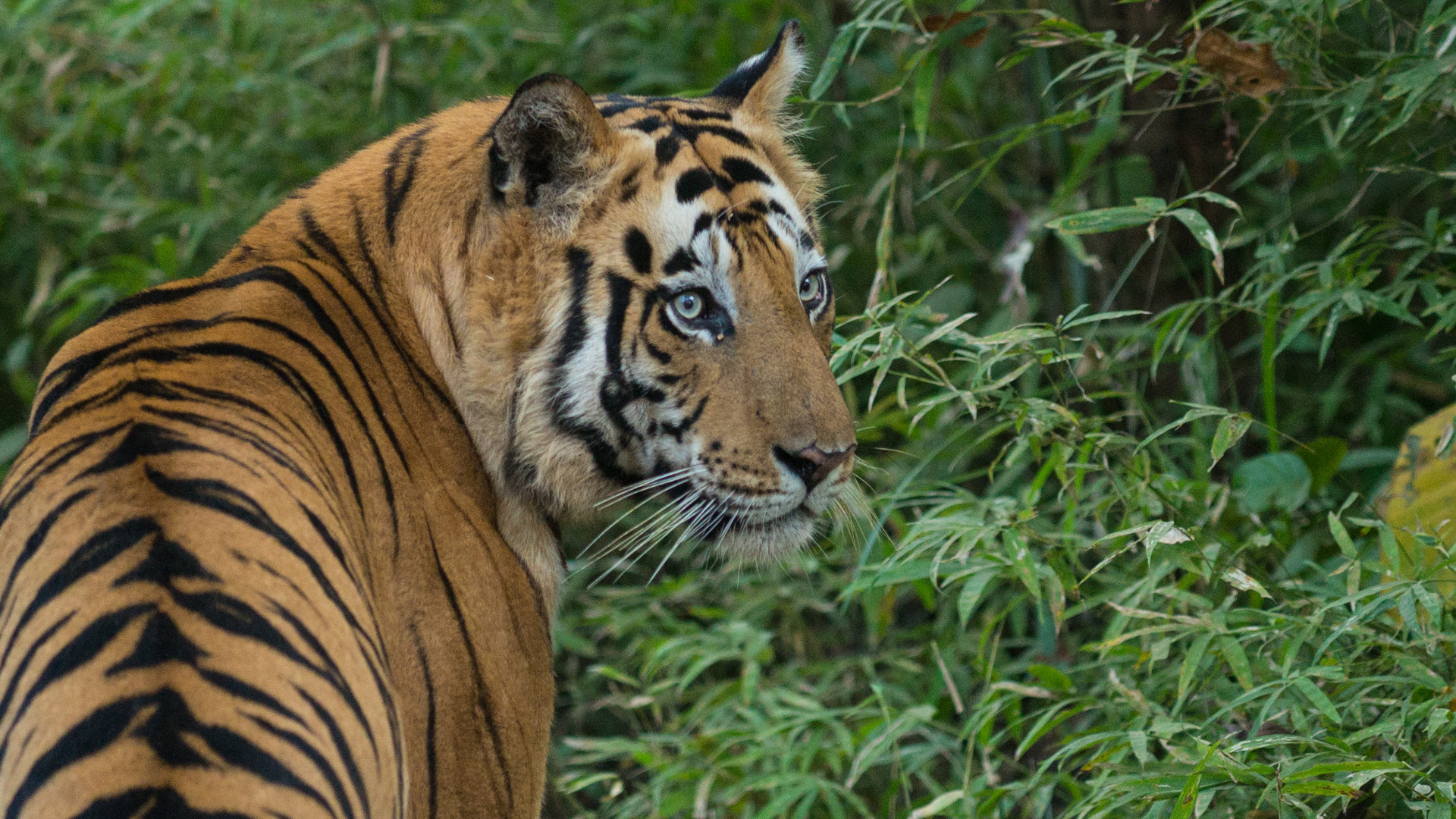Farmers and livestock owners tend not to like living too close to large predators, but maybe that’s something they should reconsider. New research finds that the presence of nearby tigers (Panthera tigris) actually benefits farming communities in some pretty surprising ways.
According to a paper published last week in the journal Biological Conservation, tigers tend to live in the deepest, most pristine habitats they can find. In Bhutan, where the study was conducted, tigers then push two other predator species — leopards (Panthera pardus) and dholes (Cuon alpinus) — to the edge of those habitats, where they’re closer to human villages and agricultural areas.
This doesn’t put people or livestock at risk, though. Instead, the leopards and dholes (a type of wild dog) end up preying on the smaller herbivores such as wild pigs (Sus scrofa) that would otherwise be eating farmers’ crops. The crops end up doing better, as do the farmers.
Livestock also fared well, but in a different way. The domesticated animals raised by pastoralists in Bhutan tend to range relatively unattended and often graze in the forests surrounding villages. Tigers prey on livestock in the forests, but there aren’t that many tigers left in the area. The primary predators for the livestock, then, would be leopards and dholes, but they have been pushed out of the forests toward cropland where there are fewer livestock animals for them to eat. As a result, total livestock losses go down when tigers are on the landscape.

“Livestock and crop losses are two big issues faced by the agro-pastoralists in Bhutan,” says lead author Phuntsho Thinley, principal research officer with the Ugyen Wangchuck Institute for Conservation and Environment Research in Bhutan. “I wanted to study the core underlying causes of the issues in order to devise pragmatic solutions.”
The paper, which notes a history of predator persecution in Bhutan, recommends promoting apex predators for the ecological services they provide. Thinley and his collaborators calculate that the presence of a tiger would reduce so much herbivore crop damage it would be like putting an extra $450 a year in each family’s pockets. Livestock losses would also be reduced by an average of 2.4 animals per farm, the equivalent of saving $1,120 a year. Considering the per capita income of Bhutan is just about $2,200, that’s a potential economic windfall — all thanks to tigers.
Thinley says the results have been well received in Bhutan. He’s communicated his findings to local farmers and been interviewed on national TV. “Some of my scientific recommendations will also be incorporated into the government policy and environmental conservation plans,” he says.
The findings could have value elsewhere. “This is a really important paper and they’ve found something new that could be applicable to other areas,” says John Goodrich, senior tiger program director for Panthera, the global wild-cat conservation organization, who was not associated with the study.
For one thing, it could help teach people not to always blame tigers for livestock losses. “In my experience, every time something gets killed, it all gets blamed on tigers,” he says. With only about 3,800 wild tigers left in the world, reducing the number of tigers killed in retaliation for real or perceived livestock losses is critically important.
The study could also provide an incentive to use fewer snares around crops, where they’re used to catch herbivores but also capture anything else that wanders by. “Snares are indiscriminate,” says Goodrich. “They’re legal in a lot of places, like in Sumatra. Snares kill tigers’ prey, but tigers are also getting caught. It’s a huge problem.”
Goodrich notes that Sumatra doesn’t have leopards or wandering livestock as they do in Bhutan, so the same dynamic may not be at play there, but he sees value from this study in countries such as Nepal and India. “There you have high densities of tigers, high densities of livestock, and a lot of livestock depredation and issues with crop depredation,” he says. “So this could be a really useful tool in other places.”
Thinley, meanwhile, thinks the study could be replicated with other species, such as lions and cheetahs in Africa and wolves and coyotes in the United States. “I feel that the wildlife conservationists and researchers should follow suit,” he says, “particularly to highlight the ecological roles of wild animals to strongly justify their conservation rather than selling the vague idea of general conservation significance, which I think general people are not easily understanding and buying.”
Previously in The Revelator:
Tinder Talks Tough on Tigers


